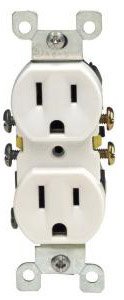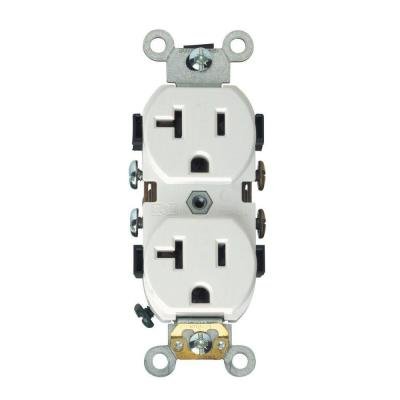Hi,
I have some questions about installing "Level 2" charging for a Model 3 Standard Range Plus in a detached garage. The garage is 52 feet from the house, with existing 110v lines (2 overhead wires to the house) and old breaker box. There is an additional 50-70 feet from where the wires meet the house from the garage, to where the wires connect to the house from the street. House was built in 1952 initially, so the garage would have been built and electrified sometime after that.
I have many questions, so I'll group them into categories. My main goal is to get faster charging installed at the lowest cost (in case I decide to move, and the house is not mine to benefit from improvements), and also to fill in some gaps about my electrical knowledge. I assume that this would be done by not supplying 220v service to the garage, but using existing lines. Can call an electrician, but want to be informed beforehand.
If you only want / are able to answer some questions, that is fine.
Questions about 110v/220v
1. If a house has 220v service (ie. for a drier outlet), then the 220v is supplied via separate wire from the street. We have 2 electric wires from the street and a 220v drier socket, so one would be 110 and the other 220?
2. Using a transformer to go from 220v to 110v or vice versa is not a thing people do inside their homes or garage. For example, lets say the wires for the garage were converted from 110v to 220, then it would double the watts, but then there would be no way to get 110v service, except via a transformer. I don't know - is that a reasonable thing to supply 220v to garage via existing lines and then step it down?
Questions about existing wiring
1. The garage has its own circuit breaker, with 4 breaker toggles 20 amps each (total 80 amps. It says on the panel "max 100 amps with 80% average current". So that means that, if dedicated only to charging a Tesla (a fair assumption generally), that it could supply 80 amps at 110v?
Questions about Tesla UMC and Wall Charger
1. Can the Tesla mobile charger take, instead of 32 amps on 220v, 64 amps on a 110v socket (assuming that the electrician wired such a socket)?
2. There is the setting inside of the car to select how many amps the UMC will draw. At first it said 32 amps, but then when plugged in, it correctly went down to 12. How does it determine that? If I use the UMC to charge at 64 amps 110v (assuming that is possible), then would it try to draw that when plugged in elsewhere?
3. Can the Tesla wall connector do 64 amps at 100v?
I think I've figured it out, that what I need is to do either the UMC or the Wall Connector at 64 amps 110v, having an electrician install that, but want to check my sanity.
I have some questions about installing "Level 2" charging for a Model 3 Standard Range Plus in a detached garage. The garage is 52 feet from the house, with existing 110v lines (2 overhead wires to the house) and old breaker box. There is an additional 50-70 feet from where the wires meet the house from the garage, to where the wires connect to the house from the street. House was built in 1952 initially, so the garage would have been built and electrified sometime after that.
I have many questions, so I'll group them into categories. My main goal is to get faster charging installed at the lowest cost (in case I decide to move, and the house is not mine to benefit from improvements), and also to fill in some gaps about my electrical knowledge. I assume that this would be done by not supplying 220v service to the garage, but using existing lines. Can call an electrician, but want to be informed beforehand.
If you only want / are able to answer some questions, that is fine.
Questions about 110v/220v
1. If a house has 220v service (ie. for a drier outlet), then the 220v is supplied via separate wire from the street. We have 2 electric wires from the street and a 220v drier socket, so one would be 110 and the other 220?
2. Using a transformer to go from 220v to 110v or vice versa is not a thing people do inside their homes or garage. For example, lets say the wires for the garage were converted from 110v to 220, then it would double the watts, but then there would be no way to get 110v service, except via a transformer. I don't know - is that a reasonable thing to supply 220v to garage via existing lines and then step it down?
Questions about existing wiring
1. The garage has its own circuit breaker, with 4 breaker toggles 20 amps each (total 80 amps. It says on the panel "max 100 amps with 80% average current". So that means that, if dedicated only to charging a Tesla (a fair assumption generally), that it could supply 80 amps at 110v?
Questions about Tesla UMC and Wall Charger
1. Can the Tesla mobile charger take, instead of 32 amps on 220v, 64 amps on a 110v socket (assuming that the electrician wired such a socket)?
2. There is the setting inside of the car to select how many amps the UMC will draw. At first it said 32 amps, but then when plugged in, it correctly went down to 12. How does it determine that? If I use the UMC to charge at 64 amps 110v (assuming that is possible), then would it try to draw that when plugged in elsewhere?
3. Can the Tesla wall connector do 64 amps at 100v?
I think I've figured it out, that what I need is to do either the UMC or the Wall Connector at 64 amps 110v, having an electrician install that, but want to check my sanity.












